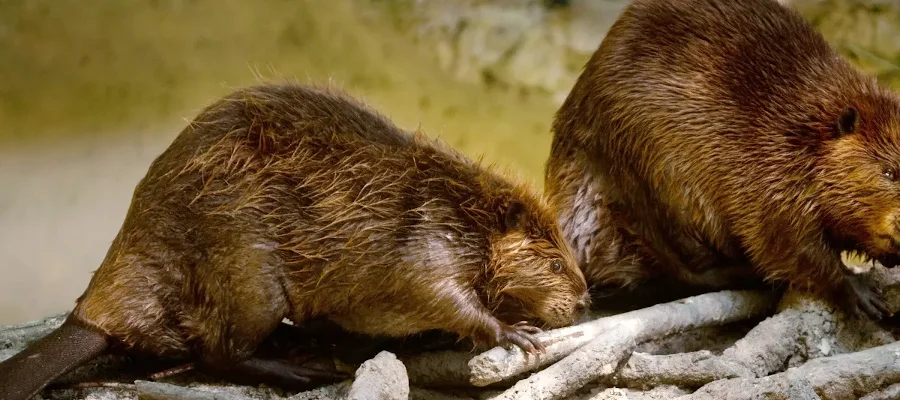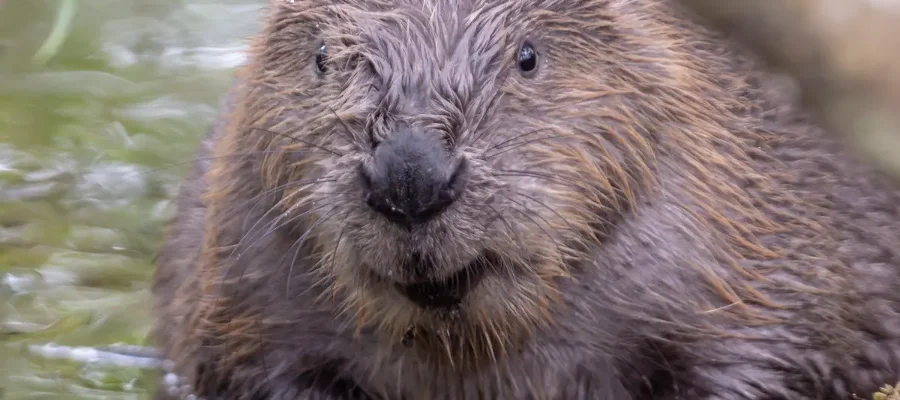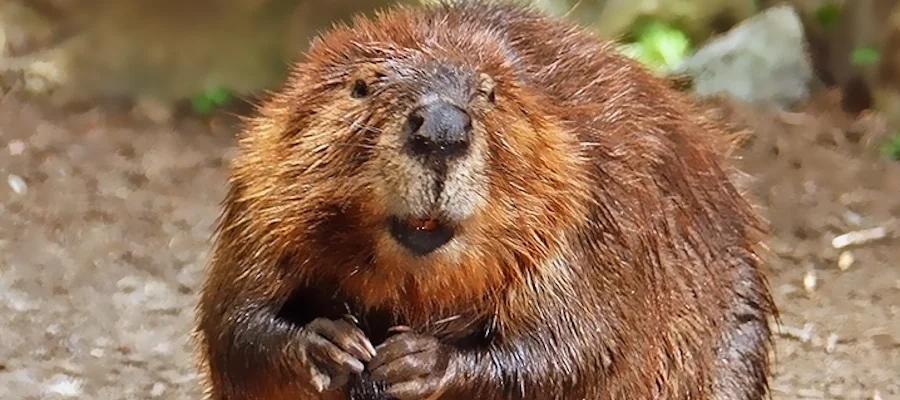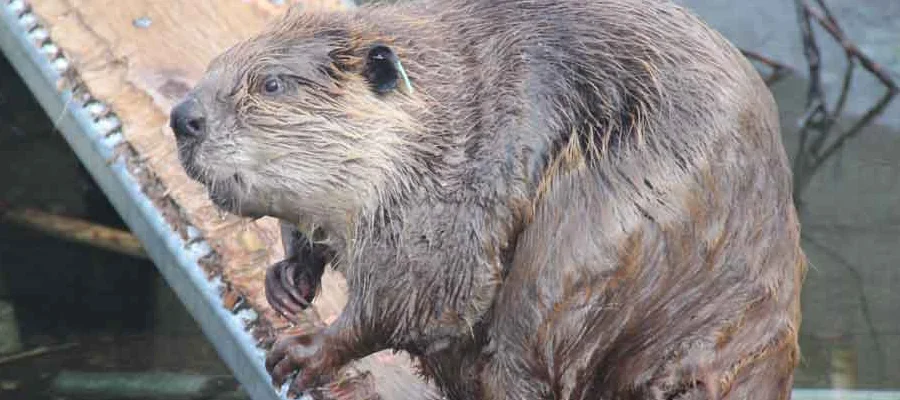In the 1940s, Idaho needed to move some beavers.
If you’re not familiar with the purpose of a beaver in an ecosystem, it’s worth knowing that there’s a lot of things about the way the wet, forested ecosystems of America that get cold enough, that rely on the presence of beavers. Beavers create dams, which in turn affect water, and its quality, and as industrious lil fellers, this means that water gets into the soil instead of running down over it. Oh there are some floods, and there are some falling trees, that’s a thing, sure, but beavers are important.
In fact, they’re so important that beavers being distributed badly creates problems in an ecosystem. Basically, if you have a lot of beavers spread out badly, they form small family pockets and that means they start looking for things that they can affect for their scale. Beavers are river-dwelling critters, they’re going to try and find a river that fits their need. If you’ve got a small creek near your fields, and four or five beavers form up in that river, then they’ll build a dam over a little creek and in the process, lead to flooding your farm land. Beavers are really valuable, though, because by taking out old trees and weak trees, they create a constant churn in the ecosystem, and give newer growth opportunities.
They’re good for an ecosystem, but you kind of want to make sure they’re over there, so their goodness for your ecosystem doing things like pooping nitrogen and maintaining the water table. Ideally, this means you want them to be up in some big central location, working together, forming a large community, and also, crucially, doing it where you aren’t doing other stuff. Because if they’re spread out, they start doing those small family group things, like I said, resulting in a phenomenon called lumpy beaver syndrome, which is, I kid you not, completely not as important as this paragraph makes it seem in this particular story, and I could have skipped on by at high speed, but lumpy beaver syndrome seems too fantastic a phrase to let a chance to use it slip by.
And in 1948, Idaho had a bad case of the beaver lumps.

Okay, so you have your problem. Too many beavers, scattered out all over. What do you do? The state of Idaho conducted a survey and figured that hey, they had a space over there that could host around two hundred thousand beavers, and that was great, because they could clear out the beavers they had and put them over there and give them time and that would sort itself out, just fine. And you may be already thinking ‘hang on, I see a problem.’
The problem being that if you’re trying to put your beavers somewhere tidy away from everything else, wherever you want to put those beavers is by definition going to be away from things, and this is 1948. Nobody’s invented the Canyonero yet, so now you have this place that’s remote that you want to put some beavers and it turns out beavers, as far as transportable creatures go, are real assholes. They’re strong and they’re determined and they can, by definition, chew through most cheap storage materials, which means you’re spending a lot of money on these beavers. You can’t put too many in the same container or they cause problems, and also, they’re heavy. Beavers can weigh up to thirty kilograms, and if you’re transporting them at this point in history, you’re looking at things like loading them onto horseback to move them one at a time to your remote location.
If they’re out in the sun, without water, for a long period of time, they will die. If they are not cooled by water, regularly, they will die. If they run the risk of dying, they will start some fuss and then you have things like beavers tipping boxes over, smashing them, then running off to the nearest body of water. They had to be moved on trucks and cars, and notably, horseback. Now here’s a bit of trivia I learned double checking sources on this one: Horses? They don’t like the smell of beavers, and they really don’t like the smell of angry beavers. I can’t believe this is a thing I now know, but you know it too.
With these problems presented Idaho decided it was time to work smarter, not harder.

The Beaver Drop was a project to transport a starting population of beavers up to an area away from Payette Lake. They were going to use a plane to deliver beavers to the lake. Lakes at the time, notoriously, did not have runways (unless one of them did, thank you Nixie, I await the discord footnotes). Which meant getting a beaver from a plane to the ground involved uhh,
Gravity.
Now, you may be thinking we’re about to hear some real 1940s Father-Knows-Best Scienceism where they literally just threw beavers out the side of the plane without doing any research or testing, which would be tragic, and funny. Instead, we get the other kind of 1940s Scienceism, where some buzzcuts with thick glasses and slide rules and a lot of fond memories of Industrial Arts class get to work doing some testing up ins.

They recruited a large, older Beaver, figuring they were more likely to be a problem, named him Geronimo – really, and I’m sorry – then built a special box for him that could be fitted with a timed parachute. First, they tested the box without the beaver, but then, they started taking low flights with a plane, and dropping Geronimo out and seeing what heights he could handle, when the parachute thonked him on down. At first, Geronimo was pretty bothered by this – breaking out of the box as soon as it landed, then bolting away. But eventually, he stopped even coming out of the box, which paints two possibilities:
- One, this beaver became like all pilots, a jaded asshole about the way he could personally slip the surly bonds of earth and touch the face of God
- Two, this beaver was so immensely traumatised by the process that he knew there was no point fighting it.
The former invokes a beaver in aviator glasses, which is much funnier to me.
They tested and they tested and then, they did it for real, transporting 76 beavers in a variety of containers. Now, you might imagine there was some funny or tragic end here, but it’s somehow more remarkable: A total of one beaver escaped early and died from the fall, but otherwise, all the remaining beavers hit the ground, just fine, and were able to escape their boxes, like they were supposed to. Geronimo, who was amongst them, arrived with three potential mates, and as far as we know, lived out his days in a pretty balling big dam as part of a big social group.

It’s weird, because for all that this story has a sort of dramatic arc to it, the conclusion was boringly competent. Someone thought ‘hey, let’s airdrop beavers into the lake in the woods’ and someone else did some math and they came around to get it done. And we know it happened, and we know how they feel about it
because they made a video promoting what they did.